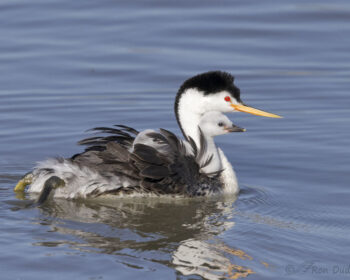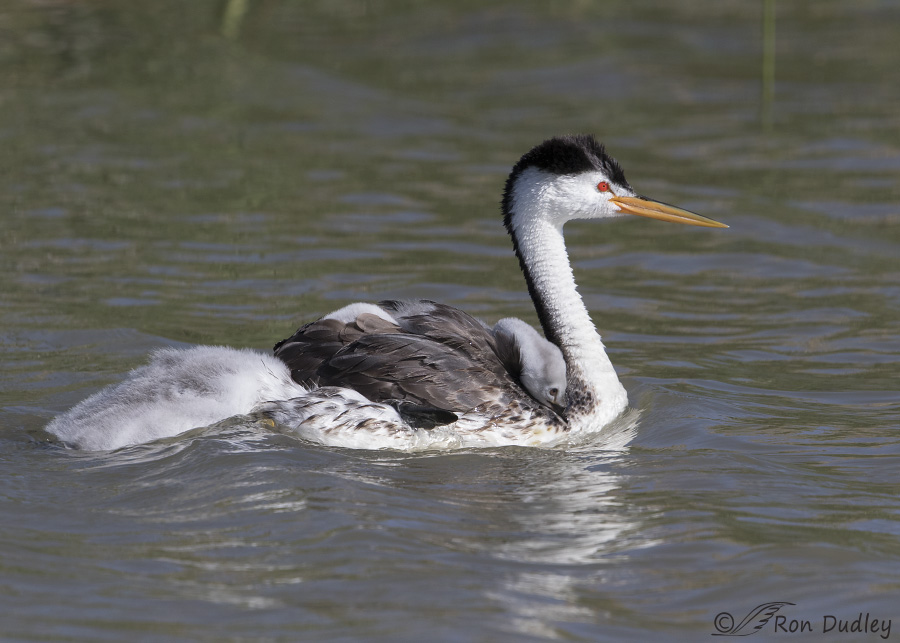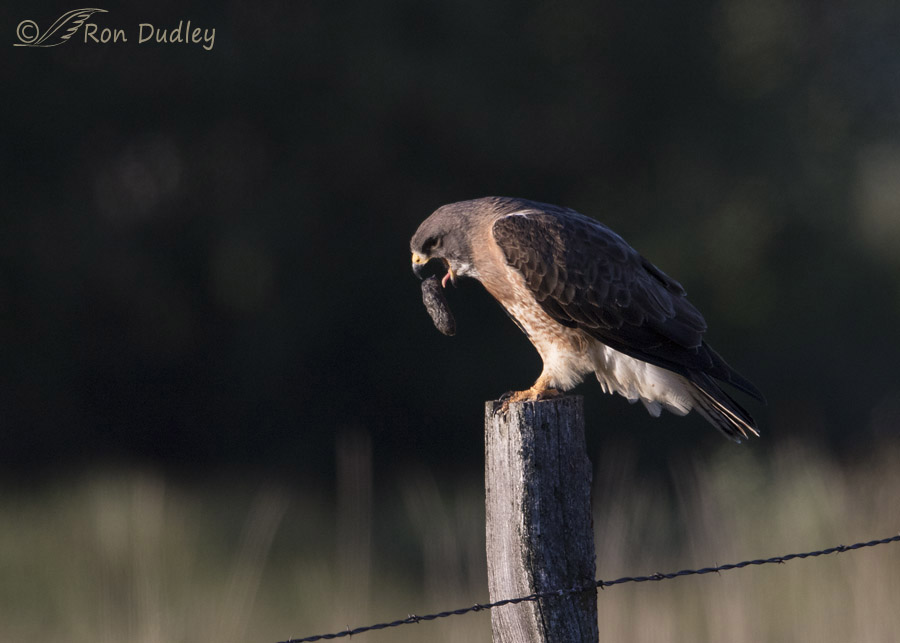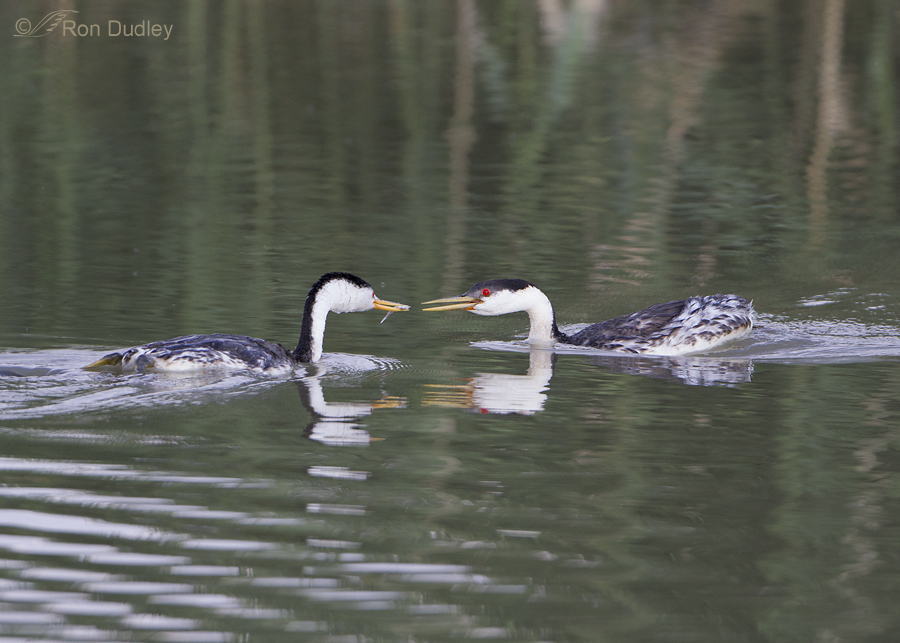Tag: aechomophorus clarkii
A Clark’s Grebe Behavior I Can Only Guess At
Swainson’s Hawk Casting A Pellet
Western Grebe Mated With Clark’s Grebe
Clark’s Grebe Blowin’ In The Wind
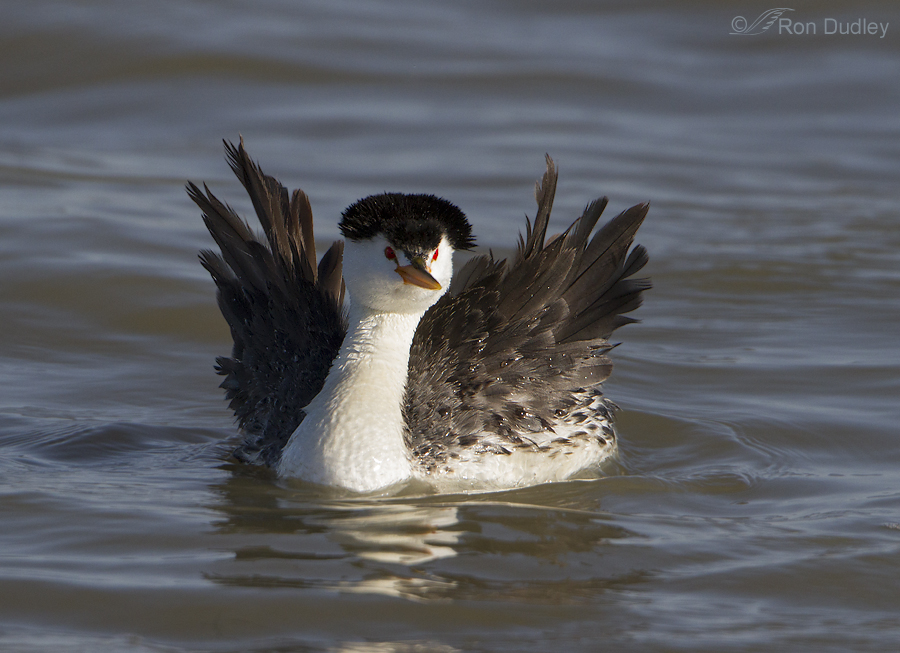
Three days ago at Bear River Migratory Bird refuge I had some wind to contend with as I was photographing this Clark’s Grebe. It made the water a little choppy and would occasionally ruffle the feathers of one of the birds when it turned its back to the breeze.
The effect varied fairly dramatically.
Clark’s Grebe Chicks Competing For Food
One of the Clark’s Grebe behaviors I was able to photograph last week was the adults feeding their chicks. The youngsters would be on the back of one parent while the other one brought in fish for breakfast. They were always small fish, to accommodate the very young chicks. Some of these aren’t great photos but collectively I think they tell an interesting story. I had been shooting faster action just prior to this sequence so my settings for the first shot aren’t particularly appropriate but then I quickly adjusted. 1/4000, f/6.3, ISO 640, 500 f/4, 1.4 tc The parent bringing in the fish wouldn’t give them directly to the chicks but instead would hand them off to its mate and then that bird would feed the youngsters on its back. Here the parent on the left has just given this small fish to the brooding adult. 1/2500, f/8, ISO 640, 500 f/4, 1.4 tc The chick in the water knew it had no chance to get the fish while it was there so it immediately made a bee-line for the back of its parent. When they’re this size they still struggle to get on board. Sometimes the parent sticks a leg out backward for the chick to climb up on but this youngster was on its own and was frantic to get up front where the food would be doled out. 1/2500, f/8, ISO 640, 500 f/4, 1.4 tc I imagine it’s not easy getting up there since they have to work against the grain of the feathers of the…
Can’t We Go Any Faster Dad?
I’ll preface this post with an apology for the cutesy title. I usually avoid them at all costs but in this case I just couldn’t help myself… (I’m making the assumption that the adult bird here is the male because of its straight bill but it’s a subtle distinction and I could be wrong). For the last few days we’ve been having a great time with Clark’s and Western Grebes and their chicks. Both sexes of both species brood their chicks on their backs (back brooding) from almost the moment they hatch until they are quite large. I’ve seen up to three chicks of about this size on the back of a single adult, although by the time they get this size the other parent often shares the burden. 1/1600, f/8, ISO 400, 500 f/4, 1.4 tc When I first saw this image of a Clark’s Grebe and its chick on my screen I assumed it was simply another case of the youngster having just jumped onto the back of the adult (as evidenced by the position of the feet and the direction of the water splash). But now I’m quite convinced that the adult was actually allowing the youngster to act as an outboard motor of sorts as the chick seems to be providing the propulsion as the parent relaxes. If so, and I think it is, in all the time I’ve spent watching these birds this is the first time I’ve noticed such interesting behavior. I offer this image as further evidence of my theory…


